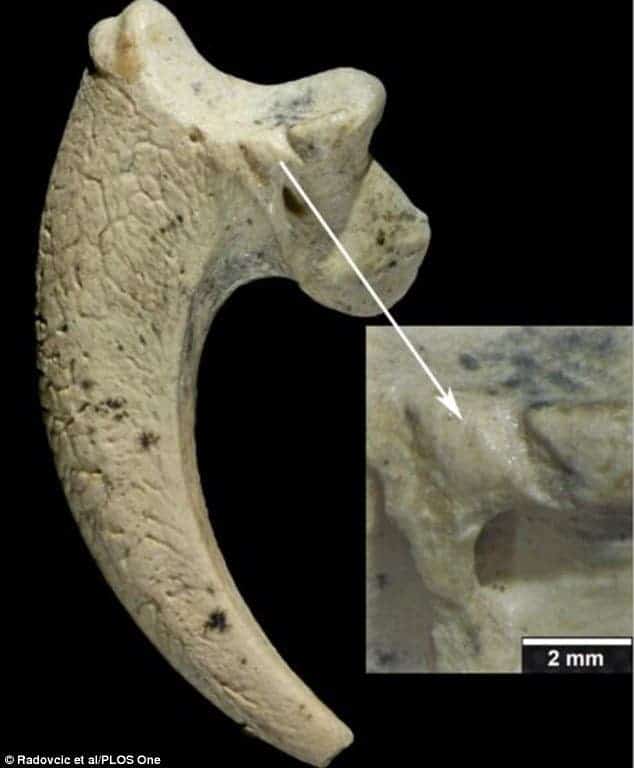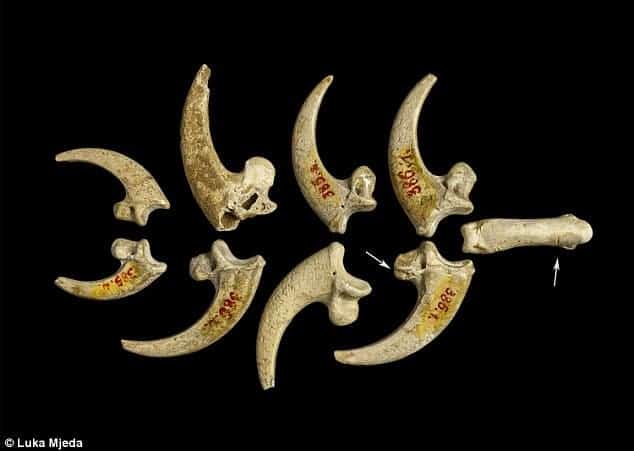Recent archaeological and anthropological research showed that Neanderthals weren’t the mindless brutes we once thought they were – they were smart, organized, they had their own speech and interbred with early humans. Now, a new study has found evidence that 130,000 years ago, Neanderthals also designed elaborate jewelry, a degree of sophistication never seen before for that time.

“It’s really a stunning discovery. It’s one of those things that just appeared out of the blue. It’s so unexpected and it’s so startling because there’s just nothing like it until very recent times to find this kind of jewelry,” said David Frayer, a professor emeritus of anthropology. “It’s associated with fossils that people don’t like to consider to be human.”
Archaeologists in Croatia found eight talons taken from a white-tailed eagle, and after analyzing them, concluded that they were used to create a necklace or bracelet. The talons were actually discovered 100 years ago, but the team that worked there initially didn’t even consider the possibility that Neanderthals turned them into something ornamental. Polishing and cut marks are evident, but despite this, no one gave them much attention, until now.

Frayer says there’s “no doubt” they were made by Neanderthals because they were dated 80,000 years before humans actually entered Europe, which means that only Neanderthals could be responsible. The pieces were likely strung on a piece of sinew and worn for symbolic purposes. Dr Frayer added:
“These talons provide multiple new lines of evidence for Neandertals’ abilities and cultural sophistication. They are the earliest evidence for jewellery in the European fossil record and demonstrate that Neandertals possessed a symbolic culture long before more modern human forms arrived in Europe.”
Still, it’s not clear if the jewelry was purely ornamental or also carried some spiritual importance; many archaeologists believe that Neanderthals did not develop any spiritual habits or rituals on their own, and this is only something they took from humans. If the jewelry did have a spiritual purpose, it would clearly refute that theory.

“Some have argued that Neandertals lacked symbolic ability or copied this behavior from modern humans. These remains clearly show that the Krapina Neandertals made jewelry well before the appearance of modern humans in Europe, extending ornament production and symbolic activity early into the European Mousterian.”
Previously, the oldest found jewelry was dated 100,000 years ago, created by humans in Israel and Africa.
Dr Simon Underdown, an anthropologist at Oxford Brookes University, said the discovery of the talons forces us to change our understanding of Neanderthals even more. It’s clear that they were intelligent, adaptable and creative – perhaps even more so than humans, at least at one point.
“One, that they made symbolic objects which clearly means they thought in a very similar way to us, and two, much more importantly, that they were capable of making complex symbolic objects in complete isolation from us. Similar evidence from France dated to around 35,000 years ago is sometimes held up as an example of neanderthals copying us. But the date and location of the Krapina material means that this is clear evidence of independent Neanderthal innovation at its best. The last five years has seen our view of Neanderthals revolutionised – it is time to put the stupid cave man image to bed once and for all.”


